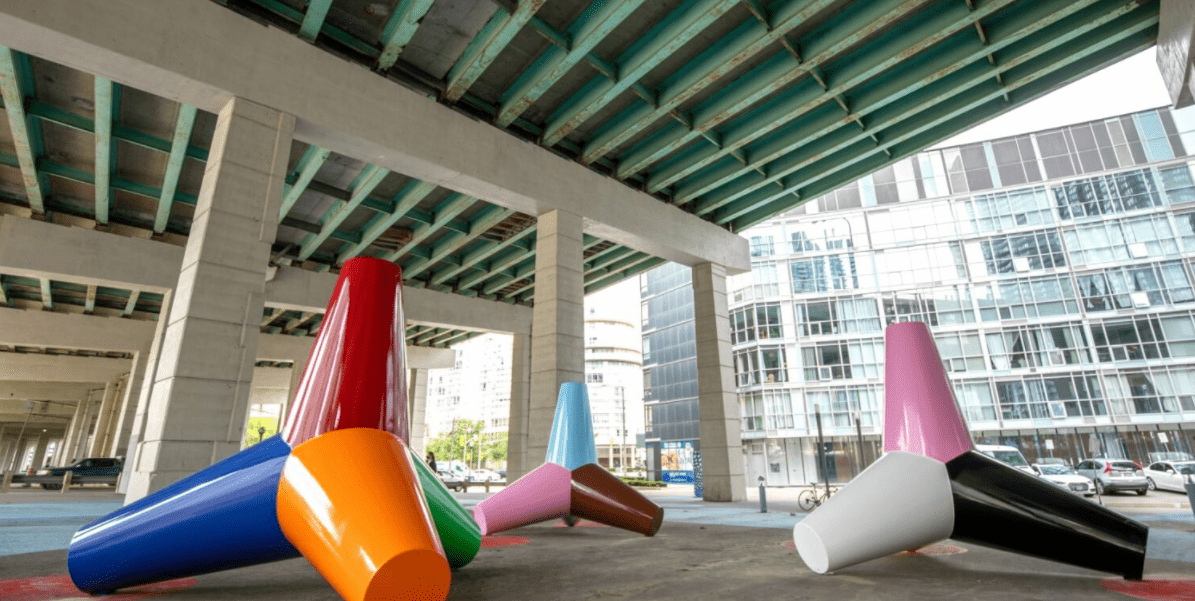“How does space shape the rules of play, and how can non-traditional spaces teach us to play differently? How does play influence our interactions in public space? How has the nature of play changed in a mid/post-COVID-19 city?” These are the questions at the heart of Playing in Public, an interactive neighbourhood exhibition that explores the many facets of what it is to play and challenges urban dwellers to not only play, but to reconceptualize play itself.
Playing in Public, is a massive art exhibition in Fort York, put on by The Bentway. It was created by a team of artists, educators, technologists, planners, and community organizers with the aim to get people moving, connecting, and having fun outside. This exhibition seems to ask the community at large if we make time for play. More than that, it makes us question what play is, especially in the time of the COVID-19 pandemic.
On its website, Playing in Public says, “As we begin to emerge from this pandemic and look towards recovery, we can use play as a guide for reengaging with the city, and with each other.” There are many art and game installations in this exhibition that demonstrate how we can re-engage with our city in a safe way as we come out of isolation. This exhibit makes it easier for people to connect again with the city and each other because it encourages safe, distanced social interaction while having fun in a relaxed environment.
One question at the heart of this installation is how we, as city-dwellers, interact with the space around us and how we choose to play. The art you can see and the games you can play make you think differently about space, play, and our role as people when it comes to play.
Pierre Poussin’s “Jax,” for example, is a reimagining of one of the world’s oldest games played in school yards across the country. It is traditionally played by tossing a ball and collecting as many “Jacks” as one can before the ball hits the ground — here those small game pieces come to life.
The game is reimagined so that the Jacks are scaled up to a factor of 25 and create an entire playscape where the participant is thrown into the game. The role of player and game pieces are reversed. Those who wish to participate in the exhibit take on the role of the rubber ball, bouncing from one Jack’s zone to the next.
While this might seem like a strange reality to envision, the player of the game becoming a physically active participant, the scope of this playscape, and how it forces us to reimagine our place as game players, is magnificent.
The interactive exhibits make us question how we see the space around us, something that has been at the forefront of most people’s minds since the beginning of the pandemic. The games also make us think about how we interact with games themselves.
At a time when games are played primarily online, in virtual worlds, this exhibit pushes us to remember what it is like to physically be a part of a game we play. This is only one of many installations you can see in the Bentway’s Playing in Public exhibit.


